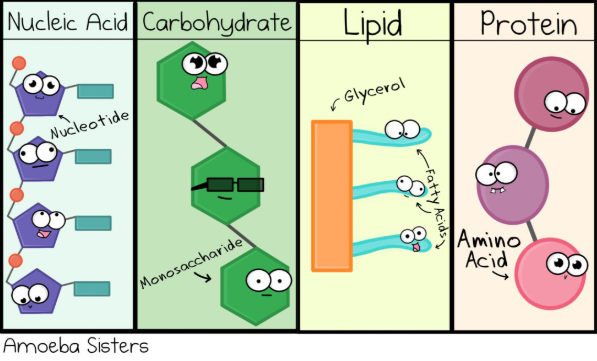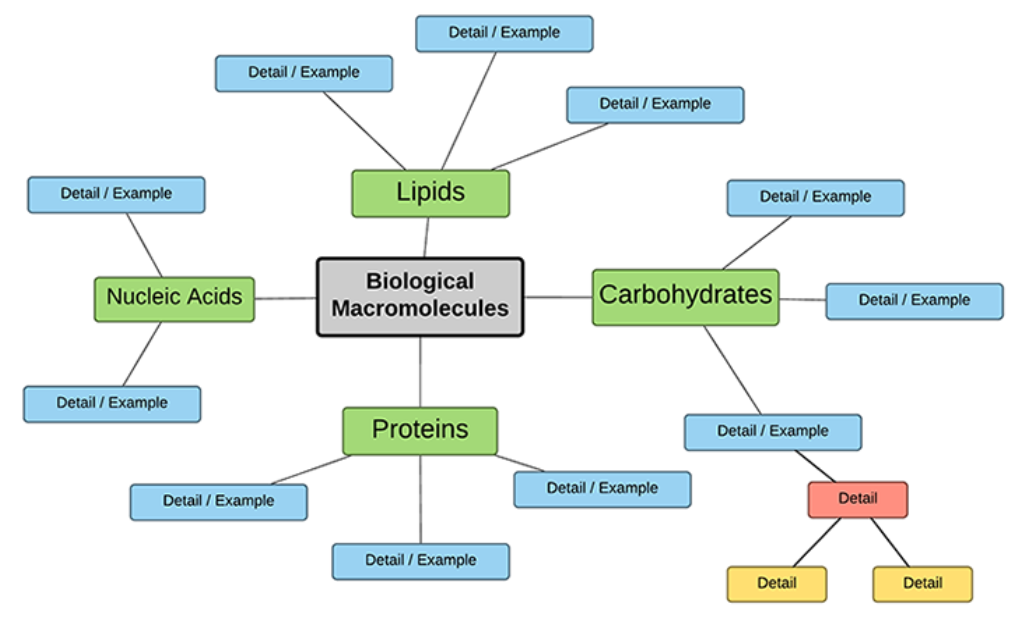Create a Concept Map of Biomolecules
This page is a draft and is under active development.
( \newcommand{\kernel}{\mathrm{null}\,}\)
Concept maps are a type of graphic organizer that can help you make sense of difficult topics. Biological macromolecules are one of those topics that will require you to have a good mental map of all of the different types of molecules, where they are located, and their functions. There are four major biomolecules important to life:

Your Assignment:
As a group, construct a concept map that illustrates the major properties, functions and examples of the four groups of molecules. You can use your book and other resources to create a comprehensive graphic, that contains details and sketches. Your map will be created on a whiteboard or poster board. The following skeleton can help you get started, but you will need to determine how many details and examples you will need.

|
Grading Rubric |
||||
|
|
3 pts |
2 pts |
1 pts |
|
|
Biomolecules |
Carbohydrates |
Topic has 15 -20 accurate details which include examples, definitions, and locations or functions, subtopics are included, branches from details included in at least 2 areas. includes 1-2 sketches per topic (3 pts each → 12 total) |
Topic has 10-14 details which include examples, definitions, and locations or functions, subtopics are included. May include minor errors with details. Includes at least 1 sketch. |
Topic has at least 4 details which include examples, definitions, and locations or functions, subtopics are included, some errors in details, sketches not included |
|
Lipids |
||||
|
Proteins |
||||
|
Nucleic Acids |
||||
|
|
Overall Organization |
Graphic organizer is a map (not a list or outline), individual details are short phrases and are linked to other details. Map uses color or shapes to make it easy for reader to follow. |
Graphic is mostly mapped, though some details are listed and not linked to other details. Somewhat difficult to follow, or minor problems with organization. |
Graphic is not well mapped, created as lists or as paragraphs, details are not linked, but may be included otherwise, somewhat difficult to read or follow. Total: |

